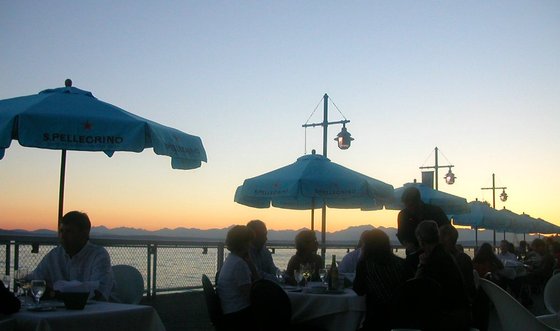UPDATE: Congratulations to Paul Greggut, author of Washington Wines & Wineries, named to list of 100 most influential people in the American wine industry.
If you stop to think about it, why shouldn't western Washington be grape-growing country? There's plenty of daylight during the growing season, and Puget Sound's rainfall is not, in most years, any greater than Burgundy's. The climate is relatively cool, but so's the weather in Oregon, in New Zealand, in Champagne, and you don't hear complaints about their winemaking.
There are dozens of wineries west of the Cascades, though most of them import their grapes from vineyards in the hot, sunny, lush (and irrigated) Columbia Valley. Only a handful, fewer than 20 wineries, a dozen or so independent vineyards, grow grapes in the Puget Sound AVA, which extends from the Canadian border to Olympia, from the western valleys of the Cascades to Westport and the San Juan Islands. Altogether, the AVA encompasses fewer than 100 acres of actual vines, according to Dr. Michelle Moyer, who runs the Washington State University viticulture program, but they are very closely watched because they hold the promise of a new, different style of Washington wine, grown "naturally," without irrigation.
The first wine grapes in what would be designated, in 1995, as the Puget Sound AVA were planted in 1977 at Gerard Bentryn's Bainbridge Island Vineyards and Winery, just up the road from the ferry terminal. The rootstock was imported from Canada: Madeleine Angevine (crisp and aromatic), Madeleine Sylvaner (light-bodied but vigorous) and Mueller-Thurgau (delicate fruit flavors), all of them aromatic, early-ripening varieties familiar to growers in Germany's northerly latitudes. Siegerrebe (a Riesling-Gewurztraminer cross) would follow, as would Pinot Noir (the classic cool-climate red grape). For years, the Bentryns most popular wine was Ferryboat White, an off-dry blend of these unfamiliar varieties.
With the Bentryns now retired, Brent Charnley of Lopez Island Winery has taken on the role of AVA guru, enthusiastically backing not just the cool-climate varieties but some newer "big red" cultivars like Golubuk, Regent, Dornfelder and Dunkelfelder. The scientific advances in viticulture permit precise identification and selection of clones adapted to specific growing conditions, such as a Sauvignon Blanc clone that ripens even in the coolest vintages. From her vantage-point at the WSU research station in Mt. Vernon, Prof. Carol Ann Miles even talks of a sparkling wine blended from Chardonnay and Pinot Noir.
It may wishful thinking, but it's not outside the realm of possibility that the experts are right, that the "experimental" plantings will mature and be taken seriously. The Puget Sound AVA will teach us new things about wine. A drop here, a drop there, and you have a wine river.
Note: My series on Washington AVAs appears regularly in Edible Seattle.

Leave a comment